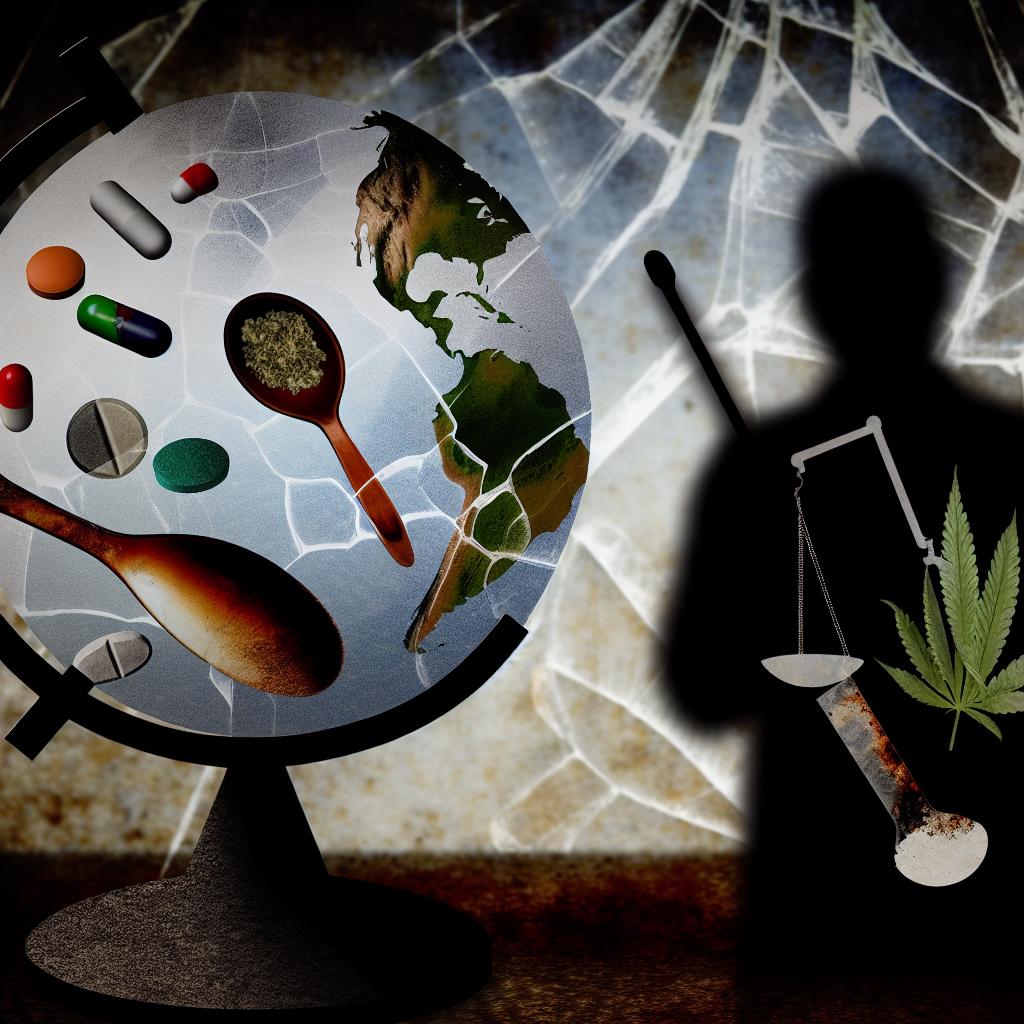The Prevalence of Illegal Drug Use
The issue of illegal drug use is a multifaceted challenge that has extensive ramifications for societies around the world. According to data from the United Nations Office on Drugs and Crime, a significant portion of the global population is affected by drug use disorders, underscoring the pervasive nature of this issue. The prevalence of illegal drug use bears profound implications for various aspects of society, including public health, safety, economic stability, and social cohesion. The following sections delve into these crucial aspects, illustrating the broad spectrum of impact that illegal substances have on communities worldwide.
Public Health Concerns
Illegal drugs pose a wide array of health risks that affect individuals and communities alike. The health issues associated with drug use span from acute problems, such as overdoses, to chronic conditions involving long-term physical and psychological effects. Injectable drugs, in particular, are notoriously associated with the increased risk of transmitting infectious diseases, including HIV and hepatitis. The sharing of contaminated needles remains a significant public health challenge, necessitating interventions that can mitigate the spread of infections associated with drug use.
Moreover, the widespread issue of addiction and substance use disorders contributes to a substantial burden on healthcare systems globally. Healthcare facilities often become inundated with cases that require not only immediate medical attention but also long-term treatment and rehabilitation efforts. The resources needed to address these issues are considerable, leading to increased medical costs and a reallocation of health system resources that could otherwise be used to address other public health priorities.
Economic Impact
The economic ramifications of the illicit drug trade are profound, affecting financial structures both at local and global levels. Governments worldwide allocate tremendous amounts of resources to enforce drug prohibition laws, combat drug trafficking, and provide comprehensive rehabilitation services for affected individuals. This allocation includes funding for law enforcement agencies, border control, judicial systems, and healthcare services tasked with mitigating the impact of drug use.
Furthermore, the illegal drug industry operates within an underground economy that undermines legitimate business operations by fostering unregulated markets. This shadow economy contributes to illicit financial flows that complicate economic stability and regulation. Evidence from the United Nations Office on Drugs and Crime reveals that the annual revenue generated by global drug trafficking is staggering, sometimes surpassing the gross domestic product of smaller nations. This financial discrepancy highlights the enormity of the challenge faced by governments in attempting to curtail the economic influence of illicit drug markets.
Illegal Drugs and Crime
The association between illegal drugs and crime represents a crucial aspect of how drug use affects societal order. Drug trafficking and distribution often fall under the control of organized crime groups, which frequently resort to violence as a mechanism to maintain their market share and dominance. The competitive nature of the illegal drug trade can incite severe public safety concerns, as these groups engage in violent acts that destabilize the peace within communities.
In many regions, drug-related crimes such as homicides, robberies, and assaults are directly connected to the operations of these criminal organizations. Combatting these crimes involves complex law enforcement strategies that require international cooperation and intelligence sharing. The intricate link between drugs and crime necessitates ongoing efforts to dismantle criminal networks while simultaneously addressing the root causes of drug supply and demand.
Social Consequences
The social ramifications of illegal drug use extend far beyond individual health and crime, deeply impacting familial and community structures. Families dealing with substance abuse may experience breakdowns in relationships, resulting in environments ridden with conflict, neglect, and, in extreme cases, abuse. Children in such environments face heightened vulnerability, potentially leading to increased demand for social services such as foster care and family support programs.
Moreover, stigma surrounding drug use can exacerbate these social issues, deterring individuals from pursuing critical healthcare or addiction treatment. The fear of judgment or legal repercussions often prevents individuals from seeking the help they need, perpetuating cycles of abuse and marginalization. Community-based interventions and educational programs play a vital role in reshaping narratives around drug use and fostering environments where individuals feel empowered to seek recovery support.
Legal Measures and Societal Efforts
Effectively addressing the challenges posed by illegal drugs necessitates the implementation of comprehensive, multi-faceted strategies that engage various sectors of society, including law enforcement, education, and healthcare. While many countries have enacted stringent drug laws aimed at deterring use and trafficking, it is increasingly recognized that penal measures are insufficient on their own. Instead, these legal frameworks must be supplemented with harm reduction strategies and public health responses.
Harm reduction strategies include initiatives such as needle exchange programs, safe consumption spaces, and addiction treatment services designed to minimize the health risks associated with drug use while supporting recovery efforts. Education campaigns targeted at youth and at-risk populations can further prevent initiation into drug use and provide crucial information about the risks associated with illicit substances.
Moreover, international cooperation remains a cornerstone of efforts to control drug trafficking and distribution networks. Collaborative initiatives among countries facilitate the sharing of intelligence, resources, and strategies to curb the flow of illegal drugs across borders.
Conclusion
In conclusion, the impact of illegal drugs on society and crime represents a continual challenge that demands sustained attention and proactive solutions. The intertwined nature of health, economic, and social consequences emphasizes the need for comprehensive strategies that not only target the roots of illegal drug activities but also support individuals in their recovery journeys. By developing and implementing policies that balance enforcement with rehabilitation and prevention, societies can work towards reducing the harms associated with illegal drug use and fostering more resilient, healthy communities. The multifaceted approach calls for collaboration across various sectors and international borders, ensuring that responses are as dynamic and adaptable as the challenges they seek to address.





